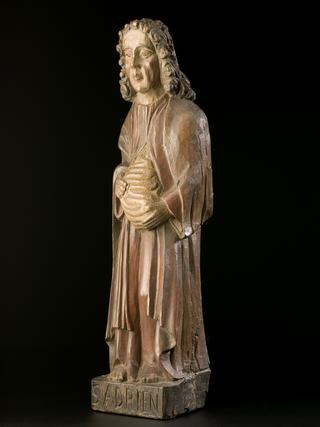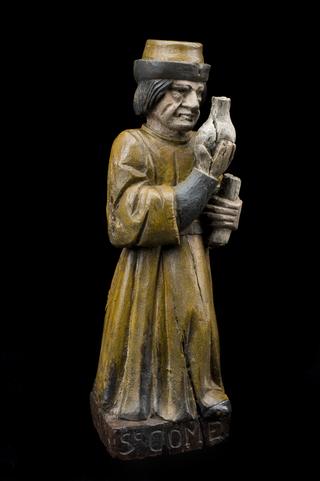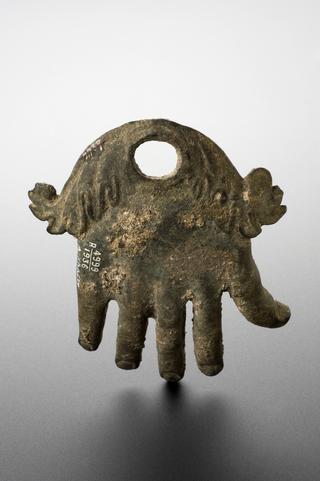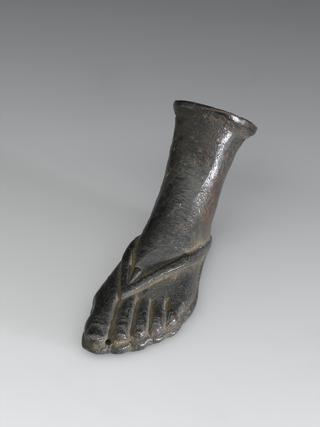
Votive offering in the shape of a bladder, Roman, 200 BCE-200 CE
- Made:
- 200 BCE-200 CE in Roman Empire
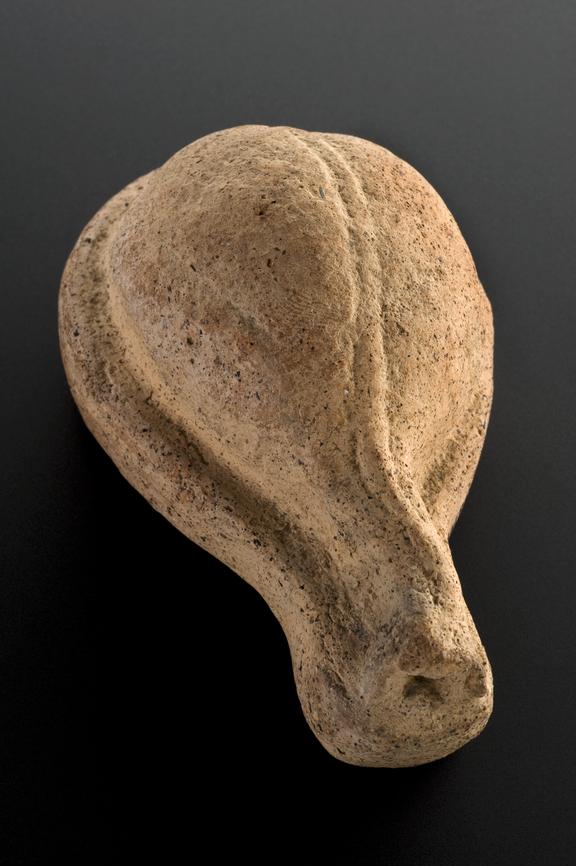
Votive bladder, terracotta, Etrusco-Roman, 200BC-200AD
Objects like this were left at healing sanctuaries and other religious sites as offerings to gods such as Asklepios, the Greco-Roman god of medicine. It was intended either to indicate the part of the body that needed help or as thanks for a cure.
Made from bronze or terracotta, as in this case, a large range of different votive body parts were made and offered up in their thousands. Although it originated in earlier cultures, this practice became very popular in Roman Italy – particularly between the 400s and 100s BCE.
Details
- Category:
- Classical & Medieval Medicine
- Collection:
- Sir Henry Wellcome's Museum Collection
- Object Number:
- A636057
- Materials:
- terracotta
- type:
- votive offering
